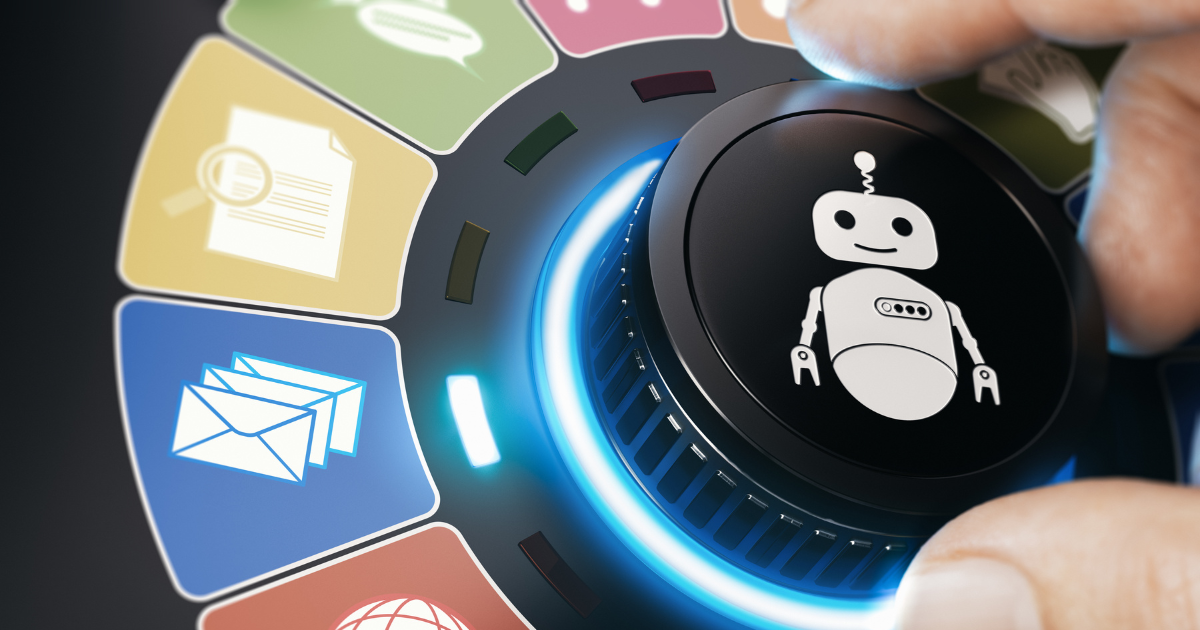Published 01 Sep 2025
The Future of BDC Training: AI, Automation & the Human Touch
A Business Development Center, or BDC, is the heartbeat of many modern dealerships. It is where leads are managed, appointments are set, and first impressions are created. Traditionally, BDC training focused on teaching agents scripts, roleplays, and CRM basics. For years, this worked well enough. But the car-buying process has changed, and customer expectations have changed with it.
Today’s buyers live in a digital-first world. They want fast answers, personalized service, and honest communication. Old training methods that rely only on memorized scripts are no longer enough. At the same time, new tools like artificial intelligence and automation are reshaping how BDC teams work. The challenge for dealerships is finding the right balance between technology and the human touch. The future of BDC training is not about replacing people but about preparing teams to work smarter, faster, and with more empathy than ever before.
The Current State of BDC Training

To understand where BDC training needs to go, we first need to look at where most dealerships are today. The typical BDC onboarding program has three main elements: scripts, roleplaying, and CRM use. Scripts provide a basic framework for handling objections. Roleplaying is used to help agents practice tone and delivery. CRM training ensures that reps know how to log leads, schedule appointments, and set reminders.
While these methods are necessary, they are often not sufficient. Too many dealerships rely on outdated scripts that no longer match buyer behavior. A line like, “If you come in today, I’ll make sure you get the best deal we’ve ever offered” may have worked in the past, but now it rings hollow to customers who have already compared pricing across multiple sites. Roleplays often lack real-world scenarios. Agents practice a neat back-and-forth conversation that never happens in the wild. And CRM training is sometimes treated as a one-time event instead of an ongoing skill.
This creates clear pain points. Leads slip through the cracks because follow-up systems are not consistent. Some reps call once and never reach out again, assuming the customer is not interested. Others spam with multiple emails but provide no personalization. The result is the same: poor customer experience and lost sales.
At the same time, customer expectations have shifted dramatically. Buyers now demand speed. A lead that is not answered within minutes can quickly lose interest and move on to a competitor. They demand personalization. A generic message like, “Hi, just checking if you are still interested in a vehicle” is far less effective than, “Hi, I saw you were looking at the 2024 SUV model. Do you want me to check availability in your preferred color?” They also demand transparency. Customers no longer trust vague promises. They want clear answers about pricing, trade-ins, and financing options.
The gap between what customers expect and what many dealerships deliver is widening. That gap can only be closed by updating BDC training to align with today’s buying behaviors. This means teaching not just scripts but how to adapt them. It means practicing roleplays that involve realistic objections like online price comparisons or buyers who have already visited multiple dealerships. It means treating CRM tools as living systems that need constant updating and review, not as a box to check during onboarding.
Dealerships that continue to train the old way risk falling behind. Those that adapt will create teams capable of meeting modern customers where they are, building trust faster, and setting more high-quality appointments that actually show up.
The Rise of AI in BDCs

Artificial intelligence is no longer a futuristic idea. It is here, and it is already reshaping the daily work of BDC teams. The first way AI shows up in dealerships is through chatbots. These tools are now capable of handling the initial response to leads. When a customer submits a form online, the AI can reply within seconds, gather basic details, and even schedule a follow-up call. This level of speed keeps the customer engaged until a human rep takes over.
AI also powers intelligent lead scoring and routing. Instead of assigning leads randomly or by rotation, systems can analyze customer behavior to identify which leads are most likely to buy. Someone who clicked multiple financing pages or spent time comparing trims might be scored higher than someone who just skimmed the site. The AI then routes those “hot” leads to senior agents who can maximize the opportunity.
But the most powerful use of AI in BDC training is in coaching. Modern software can analyze thousands of call recordings and flag patterns that humans might miss. It can identify filler words that lower credibility, tones of voice that sound rushed, or missed opportunities to ask for the appointment. It can even benchmark top-performing reps and show where others differ. Instead of waiting for a manager to review a handful of calls each week, agents can get feedback almost instantly.
This transforms the training cycle. Instead of annual refreshers or occasional coaching, learning becomes ongoing. Every call is a chance to improve. Managers gain a clearer picture of where the team struggles. Agents feel supported because they know exactly what to work on. For dealerships, it means higher conversion rates, faster improvement, and a team that is always learning.
AI is not replacing human BDC reps. What it is doing is raising the bar for how quickly and accurately they can learn. Dealerships that integrate AI coaching into BDC training will develop agents who are sharper, more adaptable, and far better prepared to compete in a fast-moving market.
Automation’s Role in Modern BDC Training

If AI is the brain, automation is the muscle. Automation handles the repetitive tasks that eat up a BDC agent’s time. Automated email and SMS follow-up sequences ensure that every lead gets regular touchpoints, even if the agent is busy. CRM systems can trigger reminders when a lead has not been contacted within a set timeframe. Appointment scheduling can be automated so customers can pick times without endless back-and-forth messages.
This matters for training because it changes what agents need to focus on. Instead of teaching reps to grind through endless follow-up lists, BDC training can now shift to teaching higher-value skills like handling objections, building rapport, and creating urgency without pressure. Automation takes care of the “busy work” so humans can focus on the moments that require empathy and judgment.
Advanced automation goes beyond reminders. Some systems can adjust follow-up frequency based on customer behavior. For example, a lead who opens every email and clicks every link may receive more frequent contact, while a lead who never engages may move to a slower drip campaign. This prevents wasted effort and keeps the focus on the most engaged buyers.
Dealerships that resist automation often see their reps burn out from repetitive tasks. Leads are lost because follow-ups are inconsistent. By contrast, dealerships that embrace automation free their teams to spend more time in real conversations. For BDC training, this means teaching not only how to use the tools but also when to step in and take over. Automation should never feel robotic to the customer. The best training shows agents how to pick up where automation leaves off, making the handoff seamless and natural.
The future belongs to dealerships that train their teams to work with automation, not against it. Agents who know how to manage automated systems will be more productive, more consistent, and more capable of delivering the experience customers expect.
The Human Touch: Why It Still Matters

Technology can do many things, but it cannot replace the human ability to connect. A chatbot cannot hear the worry in a customer’s voice about their credit. An automated email cannot offer real empathy when a buyer hesitates about trading in their only vehicle. This is why the human touch remains the most critical part of BDC training.
The best BDC agents bring emotional intelligence to every conversation. They listen carefully, acknowledge concerns, and offer reassurance. For example, when a customer says, “I’m worried my credit isn’t good enough to qualify,” the best response is not a canned line about financing. It is a calm, supportive tone: “I understand. Many of our customers feel the same way, and we work with people in all kinds of credit situations. Let’s take a look together.” That type of reassurance cannot be automated.
There are also key points in the buying journey where human interaction is non-negotiable. Pricing pushback, trade-in concerns, and final appointment confirmations all require trust. If the customer does not feel they are dealing with a real person who cares, they are unlikely to move forward.
BDC training should therefore focus heavily on teaching empathy, listening skills, and word tracks that help agents respond naturally. It is not enough to know what to say. Agents must also learn how to say it because tone, pacing, and timing matter just as much as the words. Managers can model this behavior, but ongoing coaching and practice are required for it to stick.
The irony is that as technology takes over more tasks, the value of human skills actually increases. Customers will still want to speak to a person when it matters most. Dealerships that train their BDC teams to excel in those moments will build trust that no competitor can easily replace.
Hybrid Training Models for the Future

The most effective BDC training programs of the future will not choose between AI and human skills. They will blend the two. This hybrid approach ensures that agents are both tech-savvy and people-focused.
For example, roleplay sessions can be paired with AI analysis. Agents practice handling a common objection, then the AI reviews the tone, pacing, and choice of words. It provides instant feedback, which managers can build on in coaching sessions. This creates a loop of practice, feedback, and adjustment that accelerates learning.
Training can also teach agents how to use AI-assisted scripts during live calls. Some systems already display suggested responses in real time based on what the customer says. Instead of seeing this as a crutch, training can frame it as a tool that helps newer agents gain confidence faster. Over time, as reps gain experience, they rely less on prompts and more on their own skills.
Hybrid models also emphasize adaptability. Agents learn that technology will keep changing, but the core skills of empathy, listening, and problem-solving remain constant. Training them to combine these strengths ensures that they stay valuable no matter how tools evolve.
The dealerships that master hybrid BDC training will have teams that can respond to leads in seconds, personalize conversations, and still provide the warmth and trust that only people can deliver.
KPIs for Tomorrow’s BDC Teams
Measuring success in a modern BDC requires more than tracking appointments set. New tools bring new metrics, and training must align with them.
AI effectiveness can be measured by response times, lead scoring accuracy, and appointment show rates. These numbers reveal how well the technology is working to support the team. Human skills need their own KPIs. Customer satisfaction surveys, rapport scores, and repeat business metrics all show how effective the human side is.
Advanced dealerships are even beginning to track conversation quality. Using AI, managers can analyze how often agents ask open-ended questions, how long they let customers speak before responding, and how consistently they confirm next steps. These insights go far beyond traditional call counts or appointment numbers.
For BDC training, the message is clear. Agents must be trained not only to hit volume targets but also to deliver quality conversations. Managers must be trained to look at both technology-driven KPIs and human-driven ones. Balancing the two ensures that the dealership is not just setting appointments but setting the right appointments with customers who actually show up and buy.
The Future Is Human-AI Partnership

The future of BDC training is not about choosing sides. It is not people versus machines. It is people and machines working together. AI and automation will handle speed, accuracy, and repetitive work. Humans will handle empathy, trust, and problem-solving. The dealerships that prepare their teams for this partnership will be the ones that thrive.
That preparation must start now. Training should focus on adaptability, emotional intelligence, and comfort with technology. Managers should audit their current programs and ask whether they are preparing agents for yesterday’s buyers or tomorrow’s. The gap between those two groups grows wider every day.
The dealerships that embrace human-AI partnership will not only close more leads but also deliver the kind of customer experiences that build long-term loyalty. The future of BDC training is clear: faster, smarter, and more human than ever before.
Ready to Transform Your Dealership’s BDC? For faster response times, better customer experiences, and proven results, RevDojo’s bdc training and remote BDC service can help. Our team combines advanced technology with human expertise to give your dealership the competitive edge it needs today.
All blog posts
No blogs available
RevDojo is the all-in-one solution for automotive businesses looking to thrive in today's competitive market.
© 2024 Revdojo. All rights reserved.